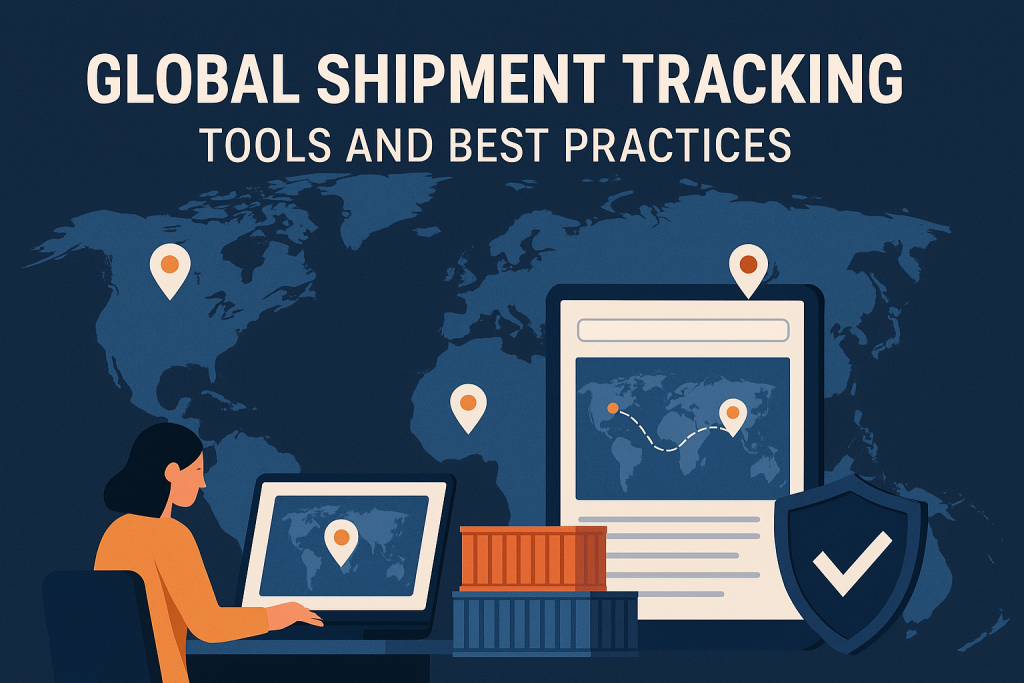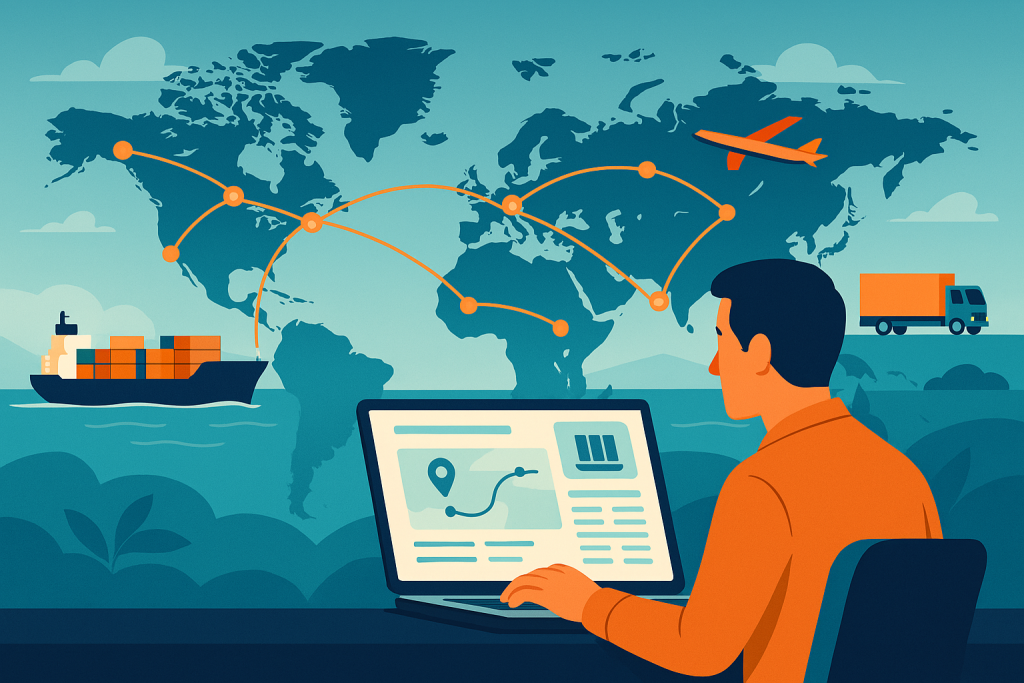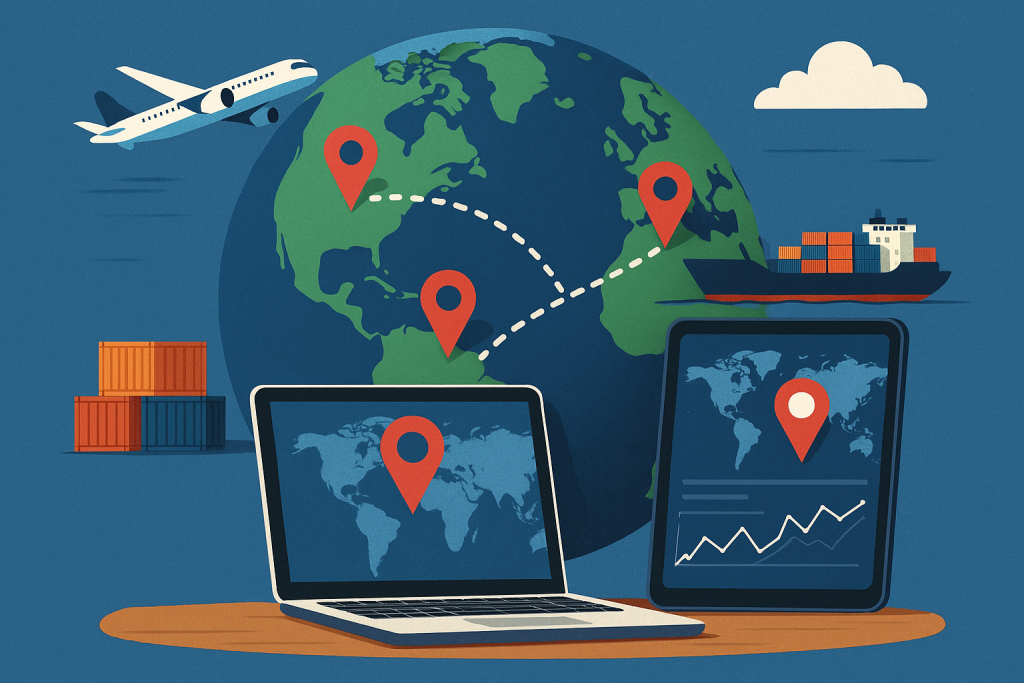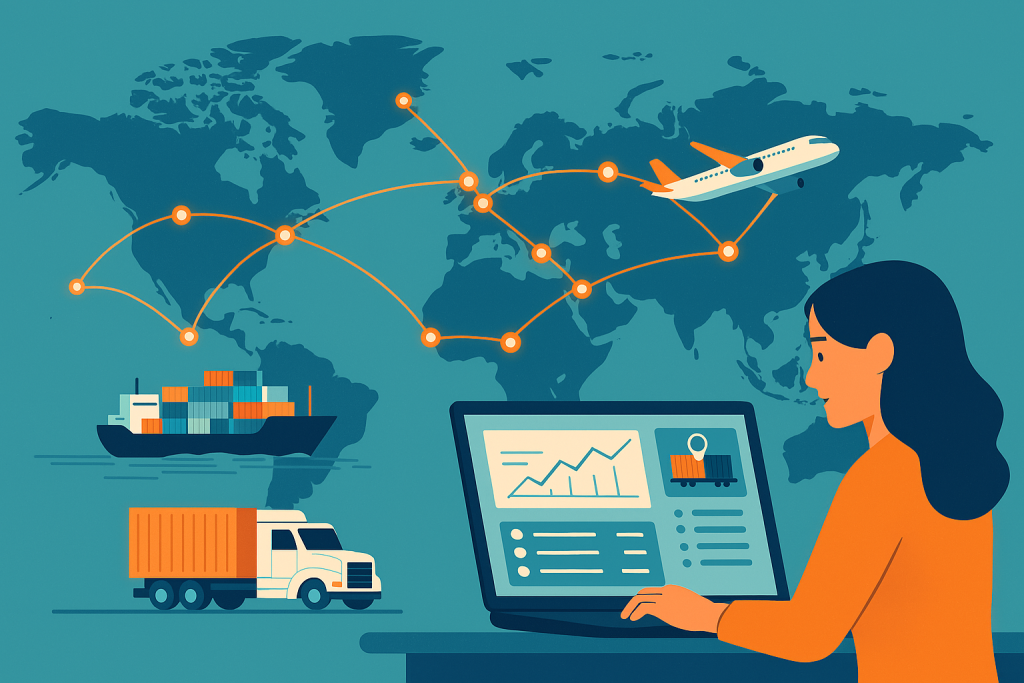Global Shipment Visibility: Tools and Best Practices
Today’s logistics professionals need more than just container numbers and estimated arrival times. They need real-time, end-to-end global shipment tracking that keeps operations informed and customers confident.

📦 What Is Global Shipment Tracking?
Global shipment tracking refers to the real-time monitoring of cargo as it moves across the international supply chain. This includes visibility into:
- Origin and dispatch details
- Milestones across carriers (ocean, air, road, rail)
- Port and customs updates
- Final-mile delivery and handoffs
The goal is simple: provide full transparency at every stage of the shipment lifecycle.
🛠️ Essential Tools for Global Shipment Visibility
The complexity of global trade requires multi-layered visibility tools. Here’s what to look for:
1. 📡 Multi-Carrier Integration
Your platform should connect with all major shipping lines, freight forwarders, and logistics providers through APIs or EDI. This ensures you’re not limited to one source of truth.
2. 🌐 Real-Time Location Tracking
Live updates from AIS (Automatic Identification Systems), GPS, and port data allow you to track vessels and containers in real time.
3. 🧾 Document & Milestone Sync
Customs releases, gate-in/gate-out records, PODs (proof of delivery)—all need to be accessible and time-stamped.
4. 🧠 Predictive Alerts & Exception Management
Smart tools notify you when a delay is likely, so you can reroute, reschedule, or communicate proactively.
5. 📊 Unified Global Dashboard
A centralized dashboard gives you visibility into all shipments, all carriers, all regions—without switching tabs or logging into multiple systems.
➡️ Linbis offers a cloud-based freight management platform that integrates these features in one interface, designed for shippers and forwarders with global operations.

🧭 Best Practices for Global Shipment Tracking
✅ 1. Standardize Your Tracking Process
Use consistent formats for shipment IDs, customer updates, and milestone reporting across all lanes and carriers.
Tip: Choose software that supports multi-modal and multi-language operations.
✅ 2. Set Up Custom Alerts
Don’t wait for problems to reach you. Configure alerts for:
- Vessel delays
- Customs holds
- Missed ETAs
- Dwell time overages
This lets your team respond before issues escalate.
✅ 3. Empower Your Customers
Offer your clients tracking links and access to a branded portal so they can follow their shipments without needing to ask.
Result: Fewer service tickets, happier customers.
✅ 4. Analyze Historical Data
Track trends over time—carrier performance, lane bottlenecks, seasonal spikes—to optimize routing and vendor selection.
Insight turns into savings.
✅ 5. Choose Scalable, Cloud-Based Tools
Global operations need tools that are accessible anywhere, support multiple time zones and currencies, and grow with your business.
➡️ Linbis, for example, is built for global freight forwarders and 3PLs, with user-friendly dashboards, live tracking, and integration capabilities to match global complexity.

🌐 The Global Visibility Advantage
Here’s what better visibility can deliver:
Benefit | Impact |
📍 Real-time location data | Plan ahead with accurate ETAs |
📤 Automated updates | Reduce manual work, improve communication |
🚧 Delay detection | Take action before disruption spreads |
📊 Analytics & KPIs | Improve vendor selection and routing |
🧘 Customer peace of mind | Build trust with transparency |

🎯 Final Thoughts
In an interconnected world, global shipment tracking isn’t just about knowing where your cargo is—it’s about enabling smarter decisions, faster reactions, and better service.
By combining the right tools with smart best practices, logistics providers can deliver reliable, scalable, and proactive visibility across the supply chain.
Looking for a platform that helps you manage international shipments from one dashboard? Linbis offers global-ready solutions for modern logistics teams.
